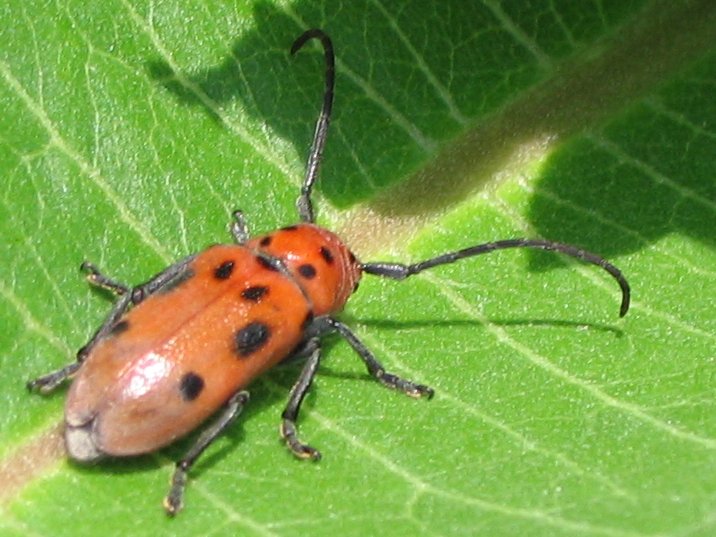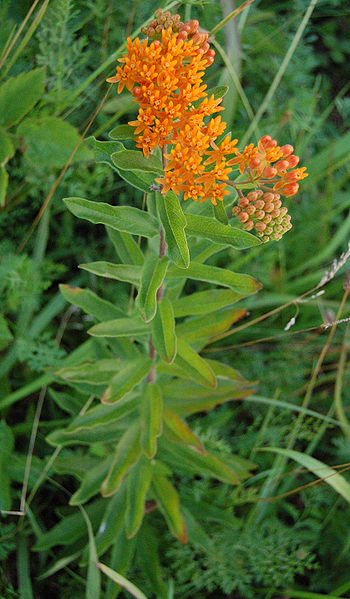
The Common Milkweed (Asclepias syriaca), a rather distintive plant if ever there was one. The pinkish ball-shaped flower bundle, the round-wide leaves, and the rather milk sap.

The seed pods, which one might be able to find this time of year, are quite distincitve, as the following photo demonstrates:
The Milkweed is also interesting for the several species of insect that rely exclusively or primarily on this plant for food and shelter. These include the Monarch Butterfly (Danaus plexippus), the Milkweed Beetle (Tetraopes tetraophtalmus), Large Milkweed Bug (Oncopeltus fasciatus).

Monarch Butterfly (Danaus plexippus) caterpillar.

Milkweed Beetle (Tetraopes tetraophtalmus)

Large Milkweed Bug (Oncopeltus fasciatus).
The Milkweed's genus name is in honor of Asclepius, the Greek god of healing.
The genus also includes the rather splendid, and notably orange, Butterfly Weed (Asclepias tuberosa):

These sites give a bit more information about this noble weed:
http://plants.usda.gov/java/profile?symbol=ASSY
http://turfweeds.contentsrvr.net/category_detail.pg_88.vesh
I have even found a short video, though a bit corny, on the Milkweed. Enjoy:
Live well!
No comments:
Post a Comment